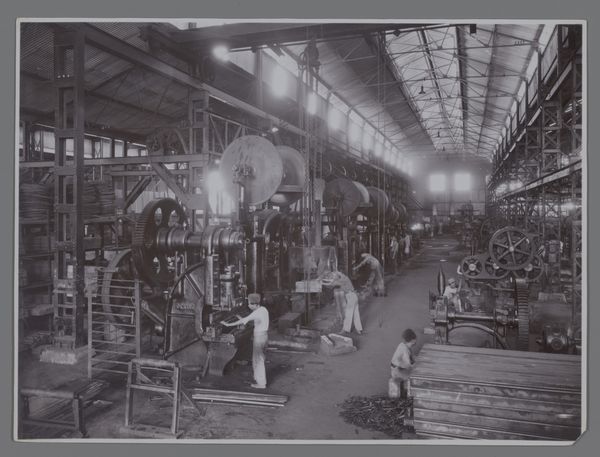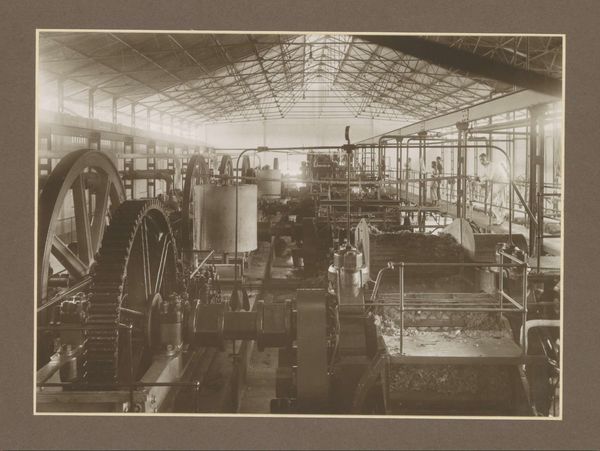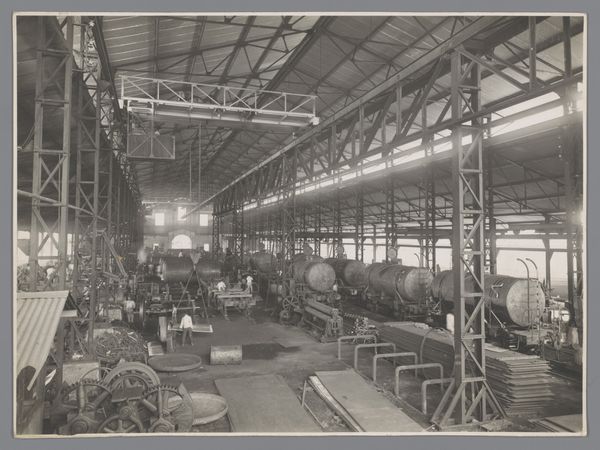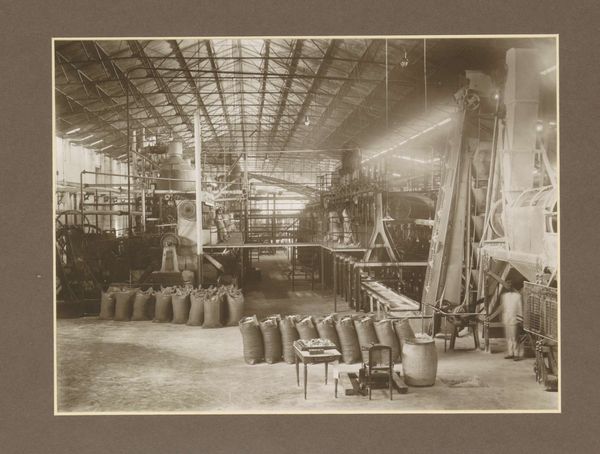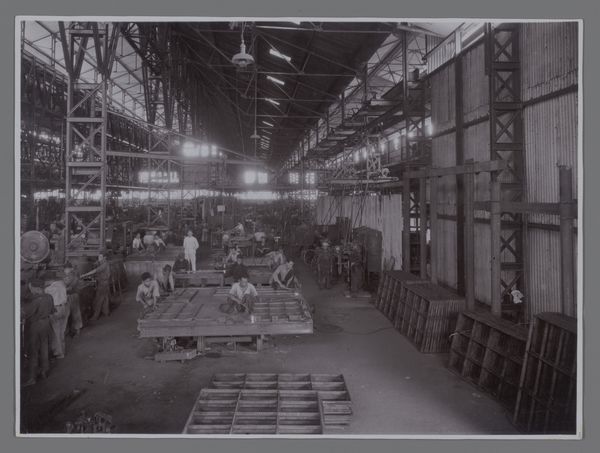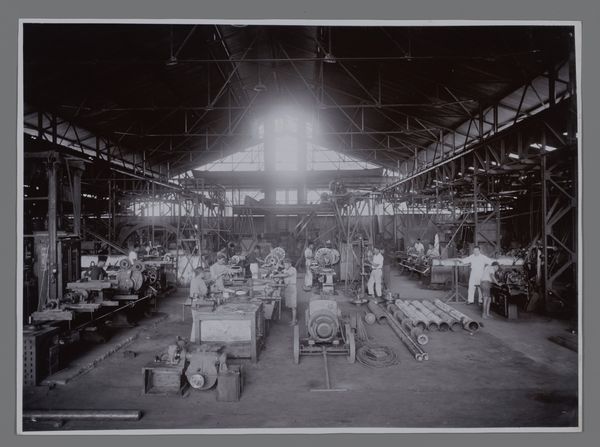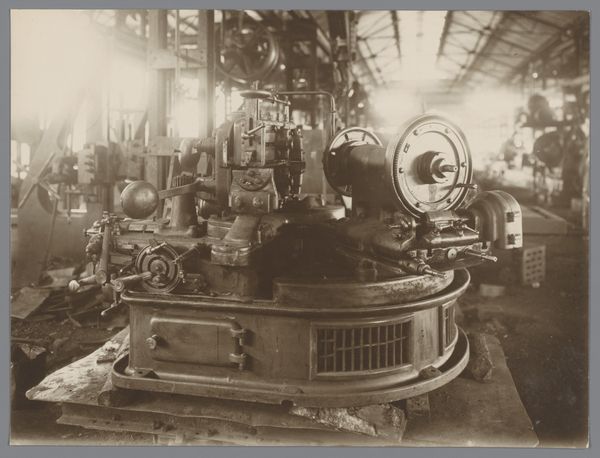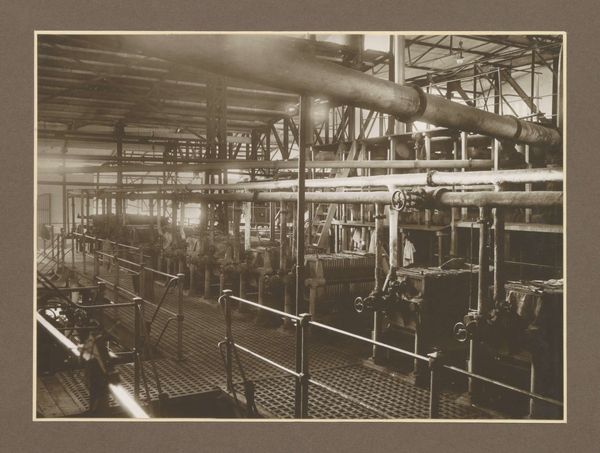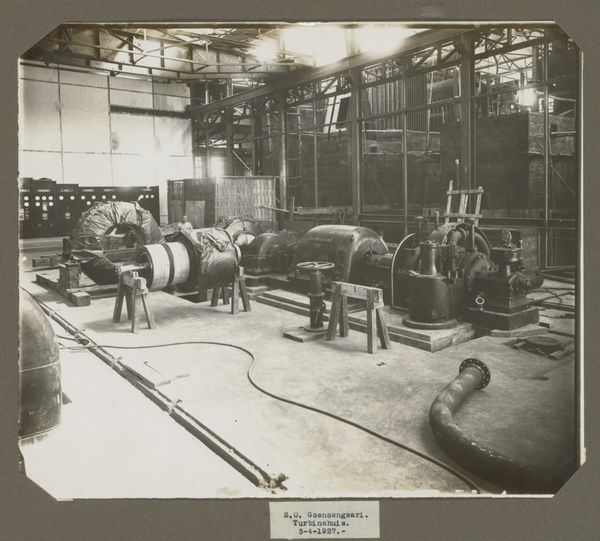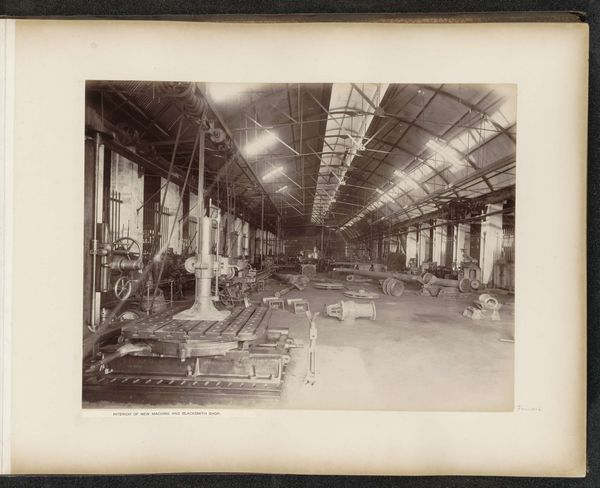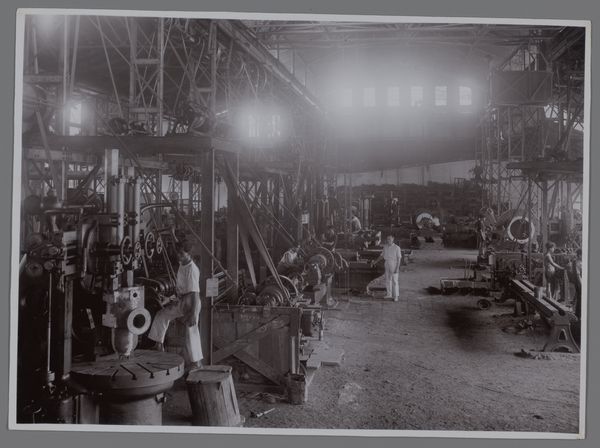
photography, gelatin-silver-print
#
sculpture
#
photography
#
gelatin-silver-print
#
modernism
Dimensions: height 153 mm, width 202 mm
Copyright: Rijks Museum: Open Domain
Curator: This photograph, titled "Tweede draaierij," was captured around 1920, using gelatin silver print technology. What are your first thoughts? Editor: An industrial cathedral. Look at the scale – both intimidating and fascinating. There's a gritty beauty here. The sepia tone lends it a kind of ghostly monumentality. Curator: Exactly. The artist captured not just a physical space, but a symbolic one as well. Think of the social symbolism: what was work's symbolic role for the working class at this time? Look closely. Notice how light seems to pour through the factory's skeleton— almost illuminating industry's sacred function. Editor: And the means! Look at the materiality. It isn't only a photograph but is also about the hulking machines and the wood blanks waiting to be processed. The photographer is making visible the labor-intensive process that mass production requires. Those wooden forms contrast sharply with the precise steel, a testament to the dialogue between raw material and refined product. Curator: It really highlights the modernist ethos of that time—finding beauty and order in industrial landscapes. How do these repeating forms mirror the psychology of an industrial, rapidly changing society? Editor: Perhaps, too, we consider the implications of early photography meeting industry. This allows us access to this kind of workplace that most audiences would otherwise not have known or seen, thereby influencing consumers' perceptions about mass-produced things. Curator: It almost begs you to consider the people within the image itself: we have very few identifiable faces. Editor: Precisely. Seeing the factory itself become the focal point diminishes the individual humanity of labor. That itself is loaded. Curator: Looking at the work overall has really highlighted that ongoing push and pull: of humans giving form to the world around us but in turn also being reshaped by that world in the process. Editor: A powerful look at the era's processes and aesthetics that shaped mass culture still visible today.
Comments
No comments
Be the first to comment and join the conversation on the ultimate creative platform.

